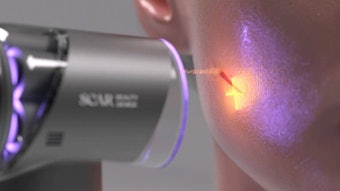Plastic and reconstructive surgeon Peter T. Pacik, MD, FACS, has announced positive results in the use of BOTOX to treat vaginismus, a condition where there is involuntary tightness of the vagina during attempted intercourse.
Since 2005 Dr. Pacik has treated more than 250 patients from across the world in his office in Manchester, New Hampshire. His success rate in treating patients with vaginismus is over 90%. He reports that the average amount of time his patients spent with failed treatments was 7.2 years. In addition, the average time his patients took to achieve intercourse after graduation from his program was less then 10 weeks. Minor complications reported include temporary mild stress incontinence in three patients and vaginal dryness was reported in one patient. Both complications cleared within four months after the BOTOX injection. No major complications or permanent injuries occurred.
“The BOTOX® vaginismus treatment program continues to have high levels of success helping to relax and stretch the vaginal muscles which interfere with the ability to consummate relationships,” states Dr. Pacik. Patients are given BOTOX injections and progressive dilation under anesthesia. Post-procedure patients wake up with a dilator in place. Afterword, they attend a counseling session where they learn everything they need to know to overcome vaginismus including: dilation techniques, how to transition to intercourse, pelvic floor relaxation and anxiety reduction. Upon completion of the program patients continue to connect with Dr. Pacik on a weekly basis to report on their treatment progress.
“BOTOX alone, without the full program including post-procedure counseling and follow-up, is a setup for failure as has been seen in several patients,” says Dr. Pacik. “Some of these patients had two or more courses of Botox and failed each time.”
The FDA approved Dr. Pacik’s pilot study to treat vaginismus with BOTOX in 2010. His research in this field was presented at the American Urogynecologic Society conference held in Las Vegas in October 2013.











